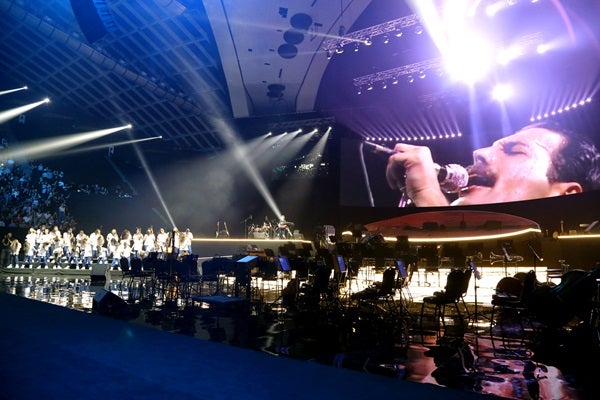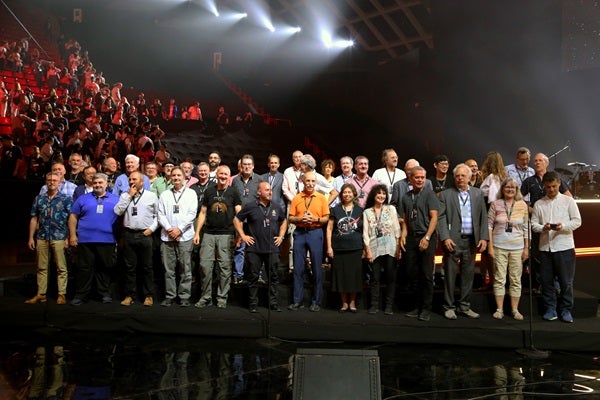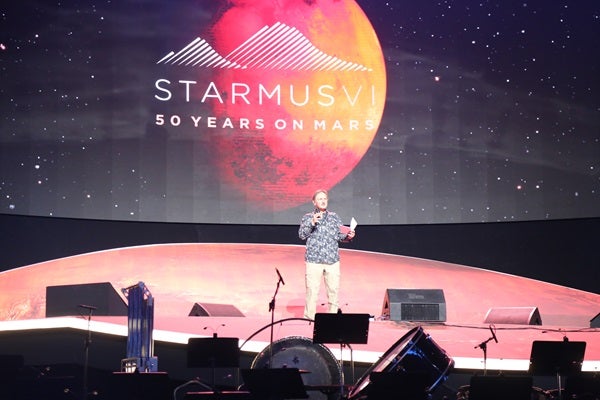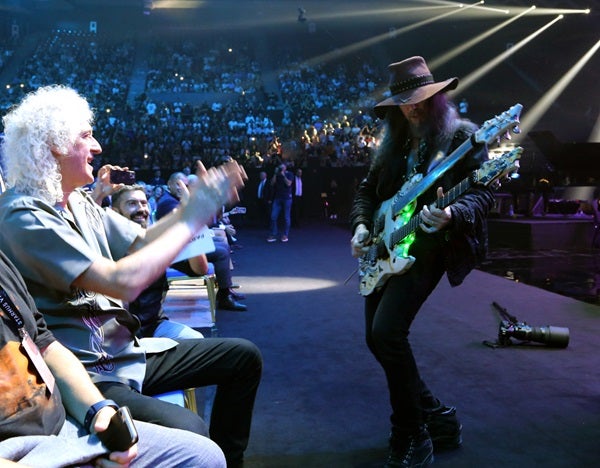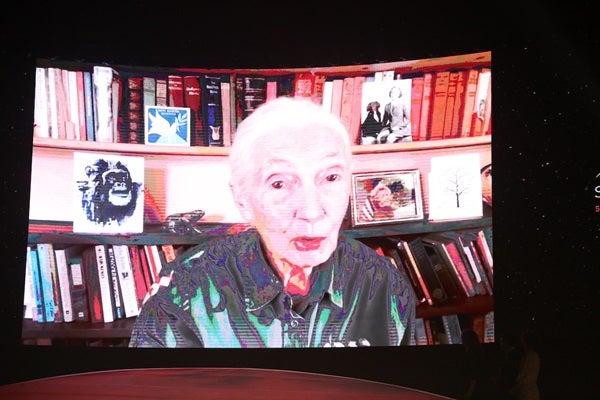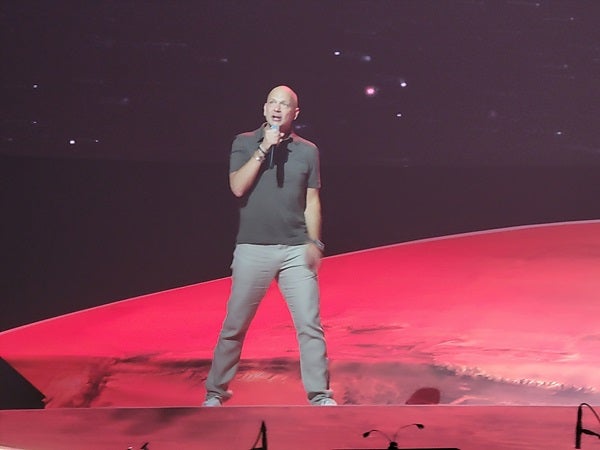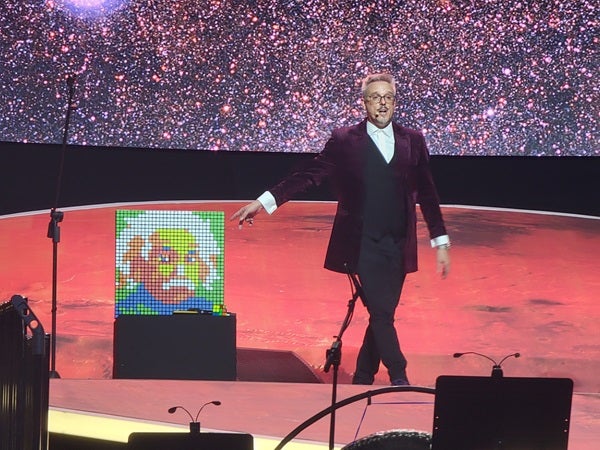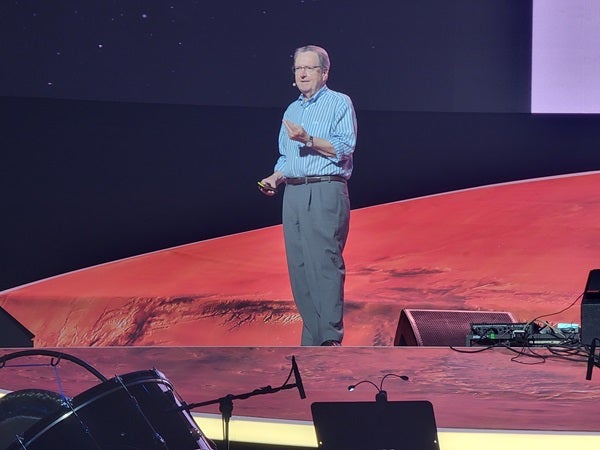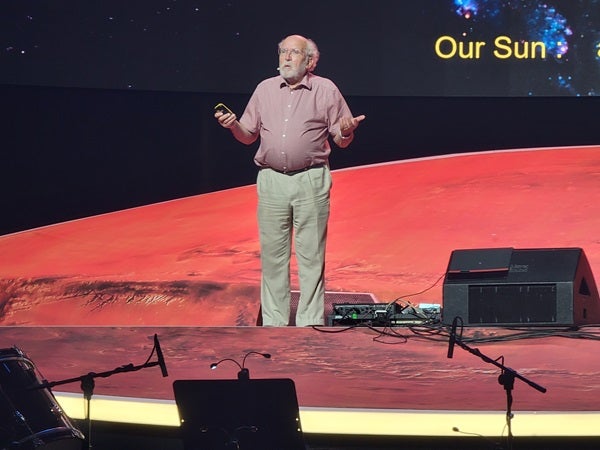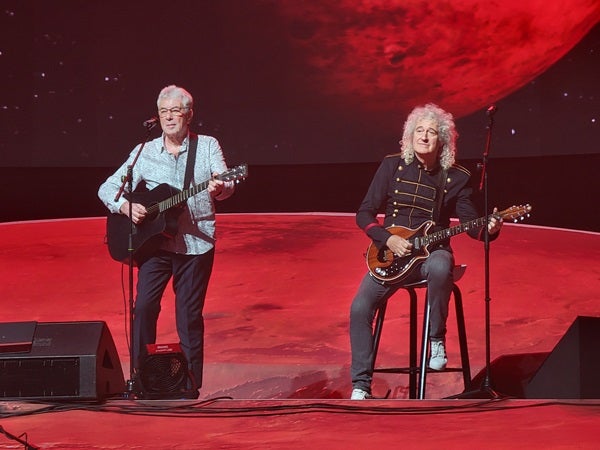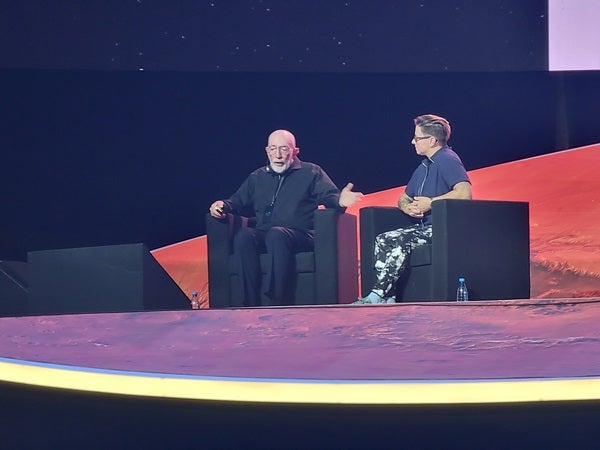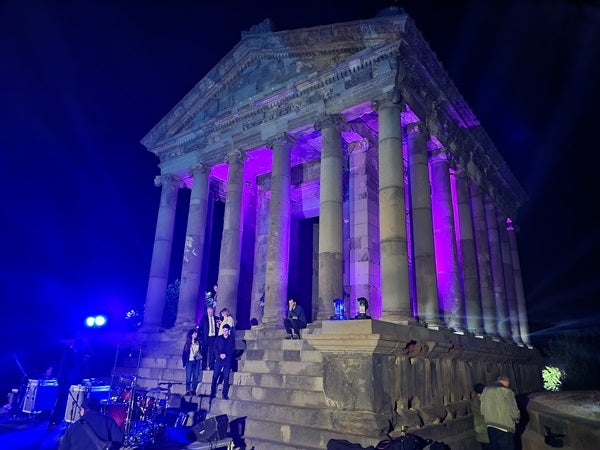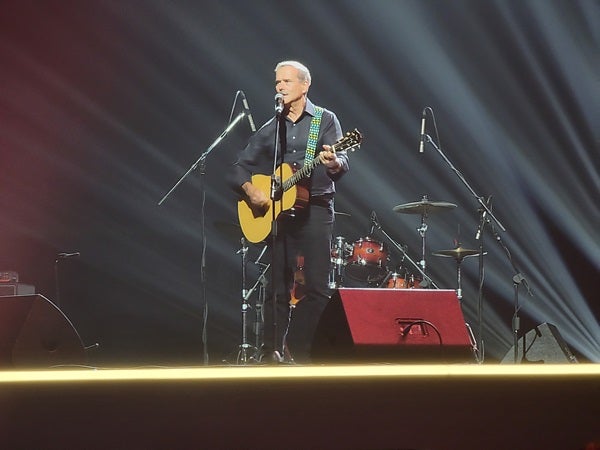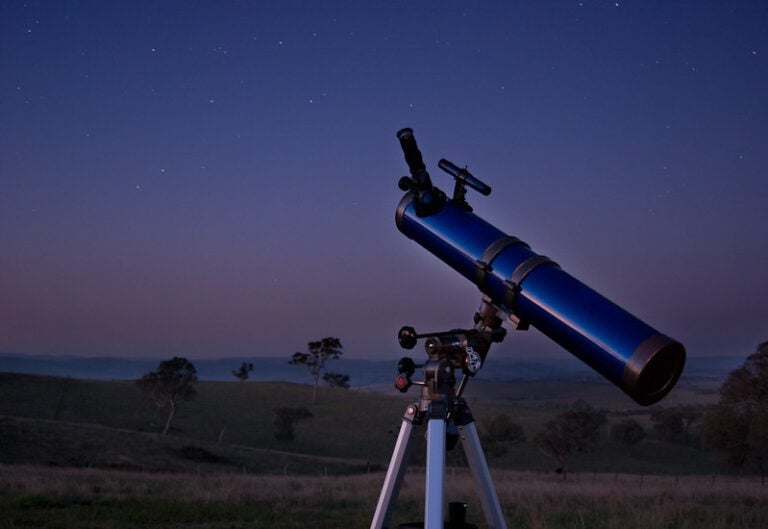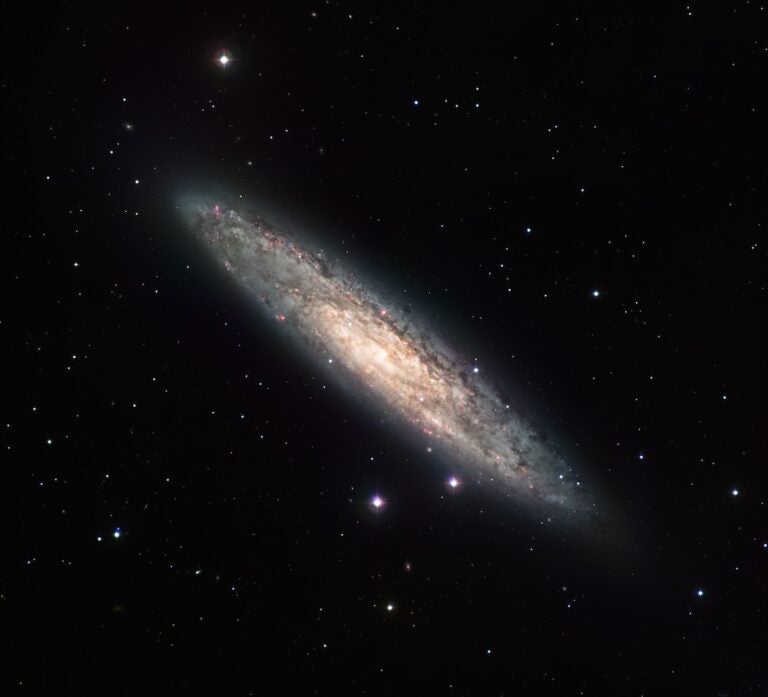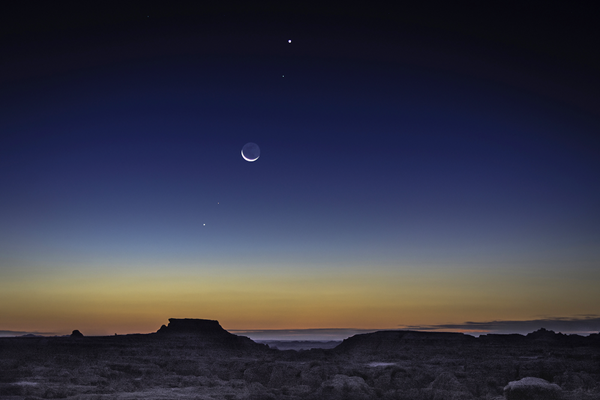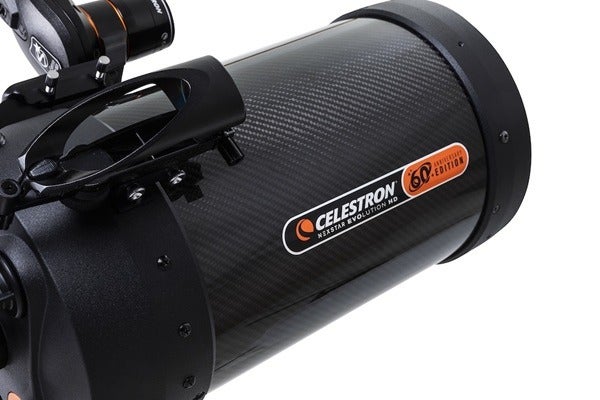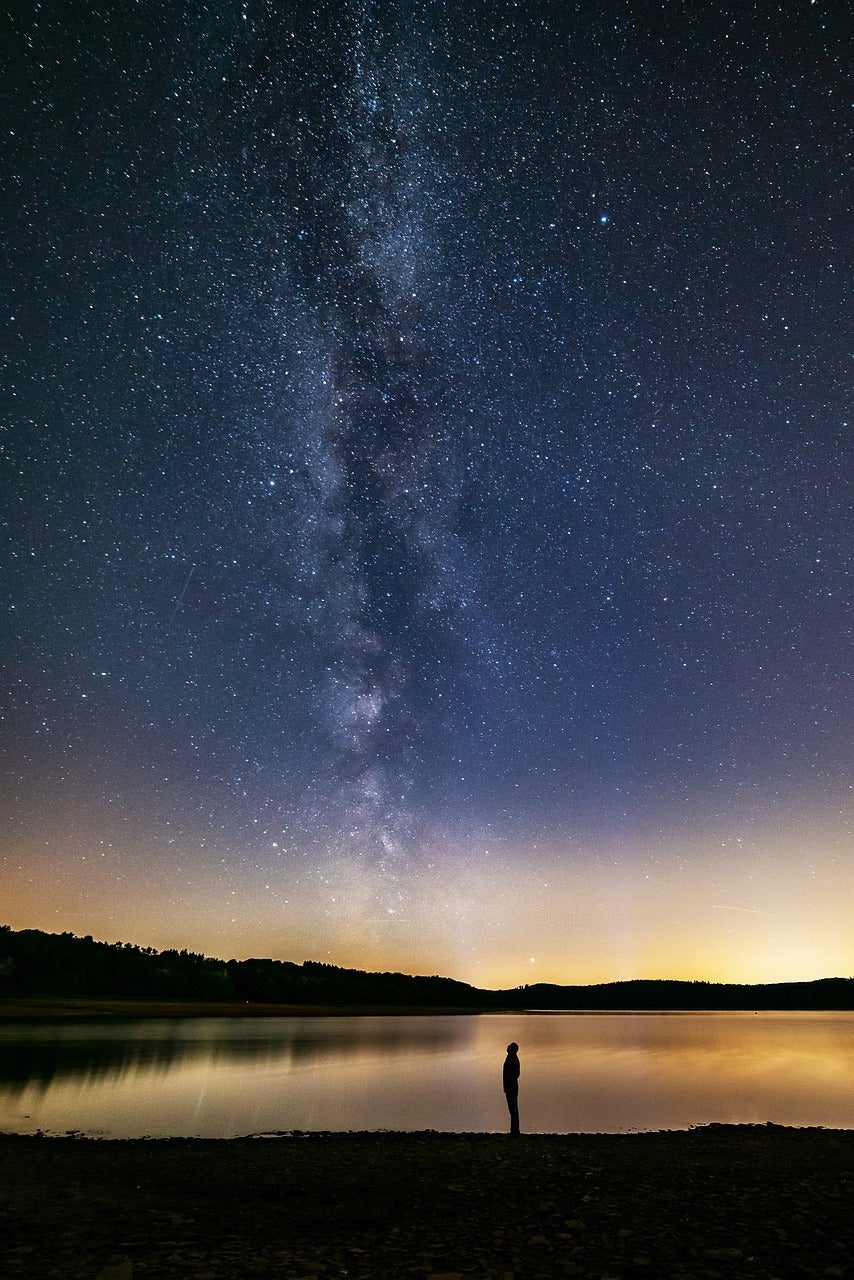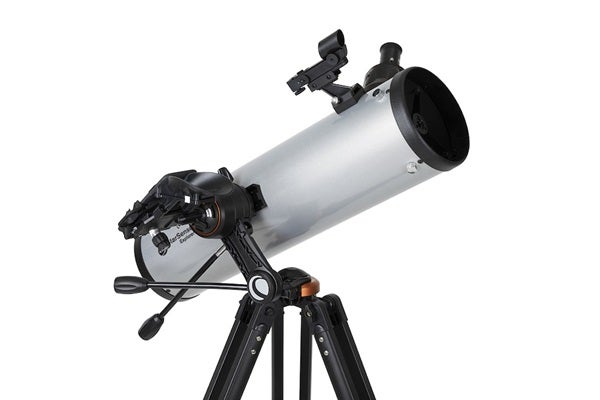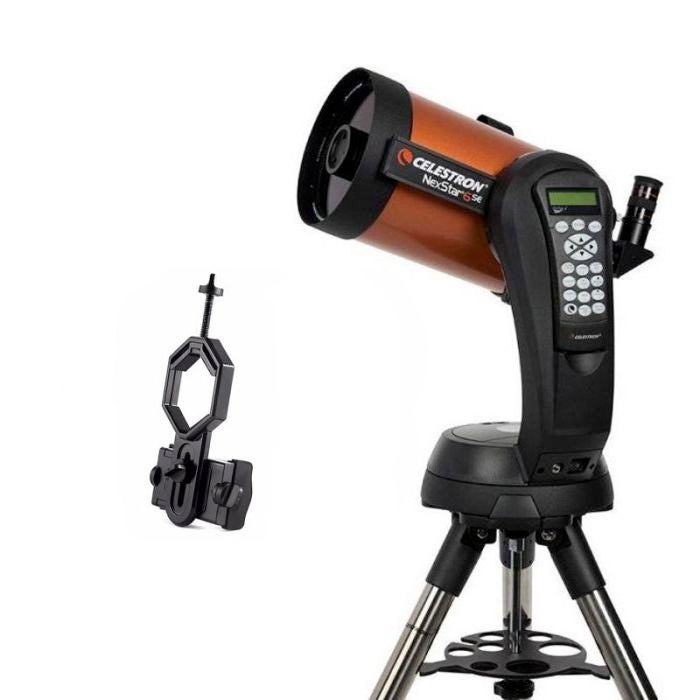A dozen years ago, two inventive minds got together and launched the Starmus Festival, an international celebration of science and music. Its creators, astronomer Garik Israelian and astronomer/musician Brian May, envisioned a week in which anyone could easily attend talks by some of the greatest minds on the planet, touching all the sciences, and also some good fun with rock ‘n’ roll.
“You have to use both halves of your mind,” May, the founding guitarist of the rock group Queen, likes to say.
We have just finished the sixth incarnation of Starmus, which generally happens every other year. Our group has been to the Canary Islands, to Norway, to Switzerland, and now to Armenia, ancestral homeland of the director, Garik. Some years ago Garik and Brian initiated me into the Starmus Board, and I was somewhat astonished this year when they named me President of the Board. Along with Brian, Garik, and me, the board consists of Richard Dawkins, Emmanuelle Charpentier, Jill Tarter, Peter Gabriel, Tony Fadell, and Robert Williams.
Armenian Starmus
Our plan this time carried us for a weeklong adventure to Yerevan, Armenia, the country’s capital, which boasts a population of just over a million. The country itself ranges over a mountainous area spanning about the size of the state of Maryland. Yerevan itself is one of the oldest continuously populated cities on Earth, and the country’s very old history of Christianity and early interest in science give rise to many unusual historical and archaeological sites through the region.
Yerevan’s central downtown area seems quite cosmopolitan, and you could whisk along believing you were in a section of New York, with crowds hustling along the sidewalks, shops of all kinds, and modern hotels and cafes. As soon as we soaked in the atmosphere a tad, and started our battle with jet lag, we heard news that a new feature of Starmus this time was up and running. Michael Bakich, this magazine’s contributing editor, traveled to Yerevan and ran a Starmus Astrophotography School, along with Scott Roberts, Oshin Zakarian, and Chris Go, teaching the 16 students all manner of techniques for capturing the sky on film.
As the astrophoto school wound down, the main Starmus wound up. And, as always, we discovered that despite our best intentions, the Starmus experience can be an exercise in sleep deprivation, with activities and catching-up with friends sometimes beginning in the mornings and cranking up again after the formal activities and lasting long into the night.
The opening concert on September 4 featured remarks by Garik, followed by a superb lecture on the brain and its function by Edvard Moser, Nobel-Prize-winning neuroscientist and director of the Kavli Institute for Systems Neuroscience in Trondheim. We then heard terrific music by Derek Sherinian along with Simon Phillips and Ric Fierabracci, and then additional concert tracks by Tigran Hamasyan featuring Marc Karapetian and Arthur Hnatek. It was a spectacular way to start the week.
The second day, September 5, was also a short day compared with those to come. I commenced by giving the first of four talks I would present around the city, composed of ideas from my 2020 book Galaxies, and other speakers also provided these kinds of talks. We visited some schools and special learning academies, as well as a facility or two for the public, and spread the love for Starmus and our enthusiasm for science.
The evening of that day then cranked up the momentum significantly when our arena really filled up with the main Starmus attendees, approximately 5,000, and we presented a multimedia show, talks, and concert centered on the Stephen Hawking Medals for Science Communication. Backed by a superlative group that included the great Rick Wakeman, the greatest keyboard player in the history of rock, and the Armenian Philharmonic Orchestra, we also featured tunes by Serj Tankian, and by the supergroup Sons of Apollo, consisting of Ron “Bumblefoot” Thal, Derek Sherinian, Jeff Scott Soto, Mike Portnoy, and Billy Sheehan.
The medals, in the name of our dear departed Stephen, who had been on our Starmus Board, went to Dr. Brian May, for his tireless promotion of science communication; the great Jane Goodall, the world’s leading expert on chimpanzee behavior; the accomplished science journalist Diane Ackerman, whose work has appeared in The New York Times and many other places; and the NASA Office of Outreach and Media.
A second gala night with blistering rock ‘n’ roll, amazing celebrity speeches (Jane Goodall’s remarks on life on Earth had quite a few in the audience in tears), and a general mayhem of fun, already had us a bit tired. And then the fun was really about to start.
Tuesday, September 6 saw the main Starmus talks commence in earnest. Our Board member and pal Tony Fadell, inventor of the iPod and co-inventor of the iPhone, got us started with a high-energy chat about how technologies on Earth and in space are linked. Another fellow board member and a Nobel Prize laureate, Emmanuelle Charpentier, then described to the audience her gene therapy techniques, known collectively as CRISPR technology. It is a breakthrough, on her watch, that may one day extend all of our lives.
Further, we heard a variety of talks that opened the mind to new and original lines of thinking. The former director-general of the European Space Agency, Jean-Jacques Dordain, walked us through an inventive exploration of Earth as a planet and how we humans had better pay attention to many of the things going on now with our home. The brilliant authority on artificial intelligence, Bernhard Schölkopf of the Max Planck Institute in Tübingen, delivered a fascinating “state-of-the-union” glimpse at where artificial intelligence is in our world. And to top it off, a favorite pal, London science comic David Zambuka, delivered a festive round of audience-participation skits, bolstered with a dose of magic, “Are You a Martian?”
We topped it all off with a gala dinner in the city that went well into the night.
The meaning of Starmus
The talks on Wednesday, September 7 took a hard turn squarely into the planets. The theme of the conference, after all, was “50 Years on Mars,” harking back to the first two successful Mars missions, the Soviet Mars 3 mission and the American Mariner 9. Lou Friedman of the Planetary Society gave us a superb overview of Mars missions from those early days up to the present. JPL’s Bethany Ehlmann provided a tour of the most important scientific discoveries achieved on the Red Planet to date. Scott Hubbard, Stanford physicist and former director of NASA’s Ames Research Center, provided a great overview of Mars exploration and where it’s going.
The afternoon sessions kept right on going with superb lectures. Our great Starmus friend Michel Mayor, Nobel Prize winner for his discovery of the first exoplanet orbiting a sunlike star, entertained us with a talk about the billions of planets inhabiting the cosmos. Taking things a step further, Lisa Kaltenegger, director of the Carl Sagan Institute at Cornell, described alien Earths to the audience, mesmerizing them with the almost limitless possibilities of what we may discover in times to come. And then our friend David Grinspoon, planetary scientist and among other things world-leading expert on Venus, issued a warning about climate catastrophes on Venus, Mars, and Earth.
It was an incredible day of dynamic talks. And it wasn’t over yet. The meaning of Starmus began to crystallize solidly: bringing incredible scientific knowledge about our world together with music, that which allows us to feel the human spirit.
To say that the concert to come that evening was a mind-blower kinda sells it a bit short. Queen’s Brian May was joined by a friend, Graham Gouldman, the co-founder, bassist, and singer of the group 10cc. Their all-star band also included Derek Sherinian, Bumblefoot Thal, Simon Phillips, and Ric Fierabracci. The band wowed the audience with Queen’s “The Show Must Go On,” 10cc’s “I’m Not in Love,” a blazing version of the classic “Smoke on the Water,” and much more. Significantly, they played a new song, “Floating in Heaven,” produced as a collaboration between Brian and Graham this year. Moreover, early in the show, the Children’s Choir of the Archdiocese of Tavush, Armenia, joined the orchestra to sing a medley of Queen songs. With a synced video of Freddie Mercury in the background, the kids knocked out songs including “We are the Champions,” leading to quite a number I saw around me tearing up.
After the show, our heads were spinning — we were at one with the cosmos. And then I was privileged to go to a late-night dinner with Brian, with Garik and family, and with our Apollo astronaut pal Charlie Duke and his lovely wife Dottie, and we talked astronomy and music and so on deep into the early morning hours. Sleep? Who needs it?
Thursday, September 8 brought new themes to the afternoon talks. Space exploration took on a more prominent role. Former NASA astronaut Jim Bagian, who is of Armenian ancestry, delivered a great talk on the medical and physiological challenges lying ahead in human space flight, particularly on long missions like going to Mars. Wu Ji, former director of the Chinese National Space Science Center, described the amazing and ambitious space program lying ahead for China. Xavier Barcons, Director General of the European Southern Observatory, laid out his thoughts on ESO’s first 60 years of discovery and what lies ahead.
The evening sessions were just as enthralling. The world’s leading expert on black holes, Caltech’s Kip Thorne, walked us through a presentation demonstrating the warped side of the universe, aided by the wonderful drawings made by his collaborator, artist Lia Halloran. Diane Ackerman, one of our Hawking Medal recipients, described for us her reflections about life on Earth and the meaning of the cosmos. Our good friend Mark Boslough, a Starmus regular and physicist at Sandia National Labs, told us about the threats by impacts from space, past and present.
And then we had a really wonderful experience. Many Starmus participants traveled a considerable distance outside Yerevan to the site of Garni Temple, a 1,900-year-old Greco-Roman structure, where we had a magnificent star party. Good pal Scott Roberts, CEO of Explore Scientific, brought a dozen large telescopes to Armenia for the event, and we had happy crowds spying the Moon, Jupiter, Saturn, and a few deep-sky objects, some getting their first-ever look through a telescope.
Exhausted, we had no choice but to carry on. On Friday I had the good fortune to serve as host for the day on the main stage, a role that my colleague Michael Bakich also played on a couple other days. The Festival’s final day began with a bang, with another old friend, and one of the remaining men who has walked on the Moon. Charlie Duke described his adventures on the lunar surface as part of the Apollo 16 mission, and recounted his much-celebrated role as CAPCOM of Apollo 11 as well. He is a national treasure, and so much fun. Astronaut and engineer George Nield told us about the future of space tourism, which is exploding in momentum and capabilities. The great visual effects supervisor Paul Franklin, a multiple Emmy winner, then delivered a highly entertaining talk about visual effects and the sciences. And Tony Donne, CEO of EuroFusion, described “Fusion: Creating a Star on Earth.”
And we finished with some memorable moments. Another Starmus regular and one of our heroes, Canadian astronaut Chris Hadfield, enthralled the audience with his “Astronaut’s Guide to Walking in Space.” His energy and enthusiasm are impossible not to be moved by. Leon Stok, an engineer at IBM, looked us into the future by detailing recent advances in quantum computing.
Once again, Garik Israelian had pulled off the impossible. We were covered with incredible memories of great, eye-opening talks, superb musical moments that seemed like dreams, and new acquaintances and friendships that seemed as though they gave us new visions of the cosmos.
I certainly would have gotten nowhere with all I had to do, with the press conferences, hosting, talks off-site, backstage craziness, and everything else, without the assistance of the volunteer who drew my assignment, Sama Shamyar. (Read Sama’s Letter to Starmus here.) I ended up giving multiple talks at various schools around the Yerevan area, sometimes accompanied by Michael Bakich and Scott Hubbard, as well as holding an initial press conference about the Festival and a press conference with Garik Israelian and Jim Bagian at Yerevan State University. Several of us also appeared before the Armenian Parliament to update the government on the Starmus plans. Whew.
Starmus left its 5,000 attendees pretty happy and looking forward to infinite possibilities of the future. We will have to see where Starmus goes next, and when we can make it happen. But one thing is for sure: Starmus will carry on, and will celebrate the marriage of science and music once again.
David J. Eicher is Editor of Astronomy and President of the Board of the Starmus Festival.

